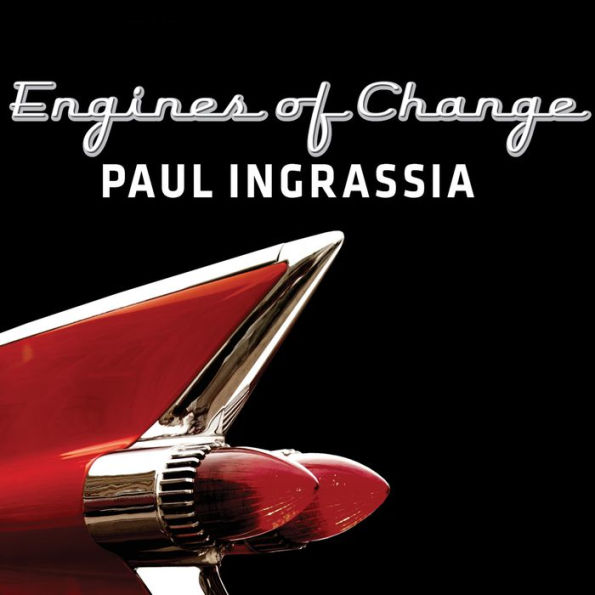…wonderfully entertaining…In this book [Ingrassia] draws upon his expertise covering the car business to give us a highly informed but breezy narrative history of the vehicles that have shaped and reflected American culture. Along the way he also gives us some sharp snapshots of the engineers, businessmen and ad people who helped design and promote these automobiles…
—The New York Times
America was made manifest by its cars. From the assembly lines of Henry Ford to the open roads of Route 66 and Jack Kerouac, America's history is a vehicular history-an idea brought brilliantly to life in this major work by the acclaimed author of Crash Course: The American Automobile Industry's Road from Glory to Disaster.
One of the nation's most eloquent and impassioned car nuts, Paul Ingrassia offers a wondrous epic in fifteen automobiles, including the VW Beetle, the Chevy Corvair, Robert McNamara and Lee Iacocca's Mustang, the Pontiac GTO, Honda's Accord, the BMW 3 Series, and the Jeep, among others. Through them, the author shows us much more than the car's ability to exhibit the particularly American tension between the lure of freedom and the obligations of utility; he takes us through the rise of American manufacturing, the suburbanization of the country, the birth of the Hippy and the Yuppy, the emancipation of women, and so much more, including the car's unintended consequences: trial lawyers, energy crises, and pollution. Narrative history of the highest caliber, Engines of Change is an entirely edifying new way to look at the American story.
1110781106
One of the nation's most eloquent and impassioned car nuts, Paul Ingrassia offers a wondrous epic in fifteen automobiles, including the VW Beetle, the Chevy Corvair, Robert McNamara and Lee Iacocca's Mustang, the Pontiac GTO, Honda's Accord, the BMW 3 Series, and the Jeep, among others. Through them, the author shows us much more than the car's ability to exhibit the particularly American tension between the lure of freedom and the obligations of utility; he takes us through the rise of American manufacturing, the suburbanization of the country, the birth of the Hippy and the Yuppy, the emancipation of women, and so much more, including the car's unintended consequences: trial lawyers, energy crises, and pollution. Narrative history of the highest caliber, Engines of Change is an entirely edifying new way to look at the American story.
Engines of Change: A History of the American Dream in Fifteen Cars
America was made manifest by its cars. From the assembly lines of Henry Ford to the open roads of Route 66 and Jack Kerouac, America's history is a vehicular history-an idea brought brilliantly to life in this major work by the acclaimed author of Crash Course: The American Automobile Industry's Road from Glory to Disaster.
One of the nation's most eloquent and impassioned car nuts, Paul Ingrassia offers a wondrous epic in fifteen automobiles, including the VW Beetle, the Chevy Corvair, Robert McNamara and Lee Iacocca's Mustang, the Pontiac GTO, Honda's Accord, the BMW 3 Series, and the Jeep, among others. Through them, the author shows us much more than the car's ability to exhibit the particularly American tension between the lure of freedom and the obligations of utility; he takes us through the rise of American manufacturing, the suburbanization of the country, the birth of the Hippy and the Yuppy, the emancipation of women, and so much more, including the car's unintended consequences: trial lawyers, energy crises, and pollution. Narrative history of the highest caliber, Engines of Change is an entirely edifying new way to look at the American story.
One of the nation's most eloquent and impassioned car nuts, Paul Ingrassia offers a wondrous epic in fifteen automobiles, including the VW Beetle, the Chevy Corvair, Robert McNamara and Lee Iacocca's Mustang, the Pontiac GTO, Honda's Accord, the BMW 3 Series, and the Jeep, among others. Through them, the author shows us much more than the car's ability to exhibit the particularly American tension between the lure of freedom and the obligations of utility; he takes us through the rise of American manufacturing, the suburbanization of the country, the birth of the Hippy and the Yuppy, the emancipation of women, and so much more, including the car's unintended consequences: trial lawyers, energy crises, and pollution. Narrative history of the highest caliber, Engines of Change is an entirely edifying new way to look at the American story.
20.49
In Stock
5
1

Engines of Change: A History of the American Dream in Fifteen Cars

Engines of Change: A History of the American Dream in Fifteen Cars
FREE
with a B&N Audiobooks Subscription
Or Pay
$20.49
20.49
In Stock

Editorial Reviews
Product Details
| BN ID: | 2940170956838 |
|---|---|
| Publisher: | Tantor Audio |
| Publication date: | 05/01/2012 |
| Edition description: | Unabridged |
Videos

From the B&N Reads Blog
